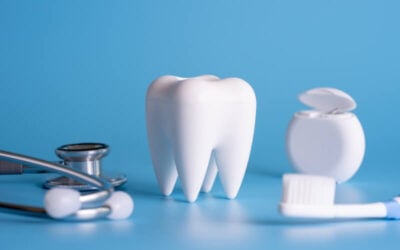Gum Disease Is No Mystery – It’s Our Own Fault
Gum Disease Is No Mystery – It’s Our Own Fault

Finding the untruth of something you’d always believed is always an interesting moment.
Inevitably temperature is involved. Electric-cold Zorro-like swash across your back. A hot caterpillar prickle upside your head.
Coccyx frozen, ice-filled. Warmth drowning drain-pulling ground, that moment something no longer is.
Even if it was since 1851.
The bottom line really is that we’re not that great at keeping up with things.
It took about thirty years to take into account that passengers were heavier and causing planes to crash. And here we are about a hundred-and-seventy-five years later deciding that normal body temperature is no longer 37°C.
Naturally, body heat fluctuates over the course of the day, and individual variants apply: women generally have higher temperatures than men and younger will always out-heat older.
While the planet’s temperatures appear to be rising, human core temperature readings seem to be dropping. Between 1935 and 1999, more than twenty studies on the average oral temperature were done.
It was found to be 36.9°C.
2017 research of 35,000 participants established it as 36.6°C.
It prompted a Stanford University School of Medicine study.
That the normal, oral temperature of adults is on average, lower than 37°C was established in the late 19th century.
With the postulation that body temperature has decreased over time, measurements from three periods were used: the Union Army Veterans of the Civil War (1860–1940), the National Health and Nutrition Examination Survey I (1971–1975), and the Stanford Translational Research Integrated Database Environment (2007–2017).
What was determined is that the body temperature for men and women, after adjusting for age, height, weight has decreased monotonically by 0.03°C per birth decade.
A similar decline within the Union Army grouping makes error an unlikely explanation. What it does offer is a substantive and continuing shift in body temperature.
Metabolic markers are the framework for discernible change in human health and longevity over a one-hundred-and-fifty-year period.
What’s difficult to know is whether German physician Carl Reinhold August Wunderlich’s obtained axillary temperatures from 25,000 patients in Leipzig, in 1851, represents true change, or bias – either from the method or the quality of thermometers and their calibration.
It was an era stamped with a 38-year life expectancy and untreatable chronic infections: syphilis, tuberculosis, and periodontitis affected large proportions of the population. This type of widespread chronic inflammation would have influenced the ‘normal’ body temperature of the time.
It’s not just a 21st century idle curiosity wanting to question the possibility and relevance of a change in average body temperature over a two-century span. It’s not a frivolous at-home DNA test before the gourmet take-away food arrives, or a temporary waft of interest across a killer podcast on killers where the bodies map Maslow’s ‘Hierarchy of Needs’.
What the study provides are important physiologic clues to alterations in human health and that include the Civil War and the Industrial Revolution.

Unlike adaptogenic menus and sleep tourism, when body temperature is a proxy measure of basal metabolic rate, there is logic worth seeking. Particularly with its long links to longevity and body size: a higher metabolic rate and shorter life span; lower metabolism and greater body mass.
Maybe it’s time to reassess some accepted paradigms.
Normal body temperature is assumed by physicians to be 37°C.
This study indicates that over 160 years, a physiological change shows that humans in high-income countries now average a 1.6% decrease in body temperature in comparison to than the pre-industrial era.
What role this physiologia plays in human anthropometrics is still under exploration.
Body temperature is vital to health.
Along with blood pressure, heart rate, and breathing it is considered a vital sign in the evaluation of a person’s level of heath.
For thousands of chemical reactions to simultaneously and continuously occur, the human body requires a narrow temperature range.
Broad fluctuations in temperature are not handled well. Sometimes permanent organ damage and even death can result. It’s the reason the thermoregulation system is so complex and exacting, in order to keep the ideal real.
Fever is typically any temperature above 37.7˚C and commonly the result of infection although heat stroke and drug reactions can also be the cause.
According to the Center for Diseases Control and Prevention (CDC) almost half the over-30s population have some form of gum disease.
It’s partly attributed to widespread denial of access to affordable dental care, and partly to inadequate oral hygiene routines.
All of it really, is due to human error.
The global mistake of separating oral health from the rest of the body.
The fault in accepting the insanity of ultra-processed foods, and constantly adulterating and affecting imbalance in our oral microbiome.
The wrong applications: of toothbrush angles, of the length of time we brush and the pressure we use.
The error in not making oral health a priority. Understanding that whatever the cost for a 6-monthly dental appointment is always going to be better value than having to pay for any treatment.
The biggest mistake ever made in the realm of oral wellbeing is taking gum health for granted.
Only a dentist can see the signs of easily treatable and temporary gum disease issues. You certainly can’t. And nor can your best friend. (Unless they happen to be an oral health professional.)
Believe nothing until you’ve had it checked.
Used to be that the average body temperature wasn’t 36.4˚C.
Now it is.
It’s an interesting moment.
Note: All content and media on the Bacchus Marsh Dental House website and social media channels are created and published online for informational purposes only. It is not intended to be a substitute for professional medical advice and should not be relied on as health or personal advice.
Services we mentioned:
Related Articles
A Hydrogel For Jawbone Loss: Dental Rejuvenation
One of the most prevalent dental issues in the world is periodontal disease. Statistically, more than 30% of adults suffer from it. What generally starts with the inflamed and bleeding gums of gingivitis, if left untreated, progresses to not only damage supporting gum...
The ADA Pushes For Better Oral Care
Dr Stephen Liew, the Australian Dental Association (ADA) president is coming out firing in the push for better oral care for Australians…
In 2024: What Your Dentist Would Really Like You To Do Differently
Happy New Year Everyone! May you make 2024 your happiest dental year ever. Here’s what your dentist would like you to do differently…
Foods And Supplements That Help Slow or Prevent Gum Disease
Are there really foods and supplements that help slow or prevent gum disease? Dentists will point toward those foods to be avoided…














